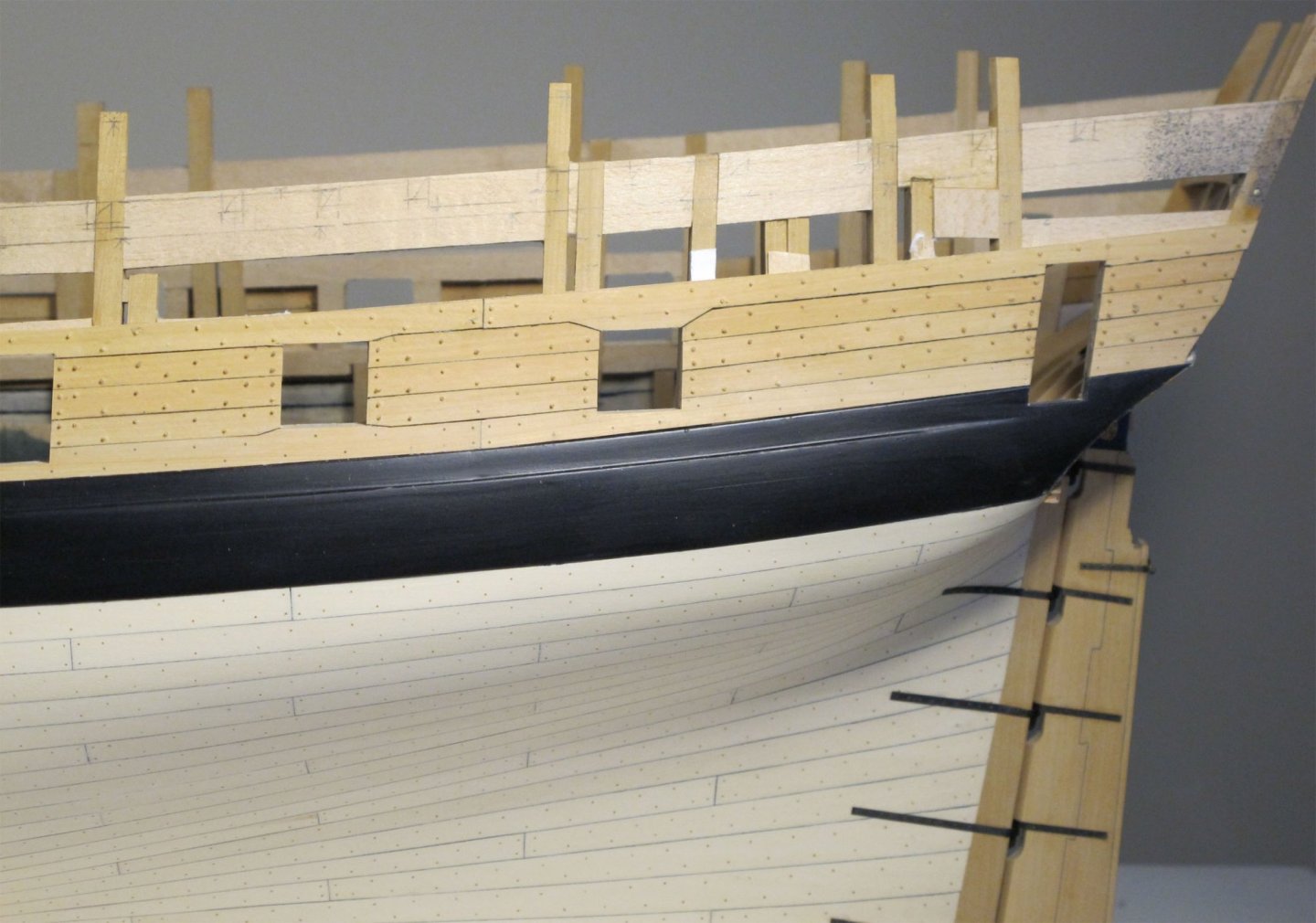-
Posts
13,131 -
Joined
-
Last visited
Content Type
Profiles
Forums
Gallery
Events
Everything posted by druxey
-
Well, George, you certainly made a silk purse out of a sow's ear, as the saying goes!
- 90 replies
-
- bomb ketch
- pyro
-
(and 1 more)
Tagged with:
-
Very impressive! Will the white wood not darken over time, though?
- 589 replies
-
- le gros ventre
- cargo
-
(and 1 more)
Tagged with:
-
Well put, Mark. I agree that the journey is both interesting and fascinating, as well as the challenge of acquiring knowledge and new skills. For me, the problem solving aspect is also very rewarding. Footnote: my first serious and large project, a 64, took 30 years start to finish, unrigged. Glad I started young!
-

ancre La Belle 1684 by Oliver1973 - 1/36
druxey replied to Oliver1973's topic in - Build logs for subjects built 1501 - 1750
Interesting method of creating a rabbet up the stem! -
No cant frames were used in English shipbuilding in the 1630's, Ed. Modern 'replicas' are usually not exactly that; usually headroom is increased, modern nav equipment, flushing heads, small auxiliary diesel engines and a prop fitted, etc. Also modern safety regulations apply! One silly example recently was Bluenose II. She was being restored (the ship is a replica of the original Bluenose) and re-fitted. Current regulations insisted on a steel rudder so, at great expense, one was made and fitted. She proved unmanageable due to the weight so the wooden rudder had to reinstalled.
-
Depends on the country of build. Very early 1700's for English shipbuilding.
-
Just came across this. Very nicely framed, sir!
- 87 replies
-
- royal caroline
- yacht
-
(and 1 more)
Tagged with:
-

Dust port - hoover connector
druxey replied to Matrim's topic in Modeling tools and Workshop Equipment
I found a piece of brass tube whose outside diameter fitted the dust port (I had to flare the end out slightly for a tight fit) and the other end fits the hose of my shop vacuum. Works well. -
Brilliant, Gary! That hose is draped so naturally and your weathering is first rate, as usual.
-
So, Rob; in short, you've been a slacker this summer. At least you've admitted it. Seriously, the renovation looks great. Do you have a 'before' photo?
- 1,208 replies
-
- great republic
- clipper
-
(and 1 more)
Tagged with:
-

Boxing joint or scarph
druxey replied to allanyed's topic in Building, Framing, Planking and plating a ships hull and deck
I'll ask them, the next time I see them ;). Perhaps while this stylized framing method demonstrated the run of the joint lines, it saved time and materials in constructing the model. -

Boxing joint or scarph
druxey replied to allanyed's topic in Building, Framing, Planking and plating a ships hull and deck
But why would contemporary model-makers bother to show complex joints there if a simple scarph was actually used? I'd put my money on a boxing joint, Allan! -

Boxing joint or scarph
druxey replied to allanyed's topic in Building, Framing, Planking and plating a ships hull and deck
Franklin, Navy Board Ship Models, 1650-1750, shows boxing joints on a 4th rate of 1690 (figure 13, page 15), Bredah, 1692 (page 16) and a medley of boxing joint variations on page 18. Definitely a boxing joint is a reasonable assumption!
About us
Modelshipworld - Advancing Ship Modeling through Research
SSL Secured
Your security is important for us so this Website is SSL-Secured
NRG Mailing Address
Nautical Research Guild
237 South Lincoln Street
Westmont IL, 60559-1917
Model Ship World ® and the MSW logo are Registered Trademarks, and belong to the Nautical Research Guild (United States Patent and Trademark Office: No. 6,929,264 & No. 6,929,274, registered Dec. 20, 2022)
Helpful Links
About the NRG
If you enjoy building ship models that are historically accurate as well as beautiful, then The Nautical Research Guild (NRG) is just right for you.
The Guild is a non-profit educational organization whose mission is to “Advance Ship Modeling Through Research”. We provide support to our members in their efforts to raise the quality of their model ships.
The Nautical Research Guild has published our world-renowned quarterly magazine, The Nautical Research Journal, since 1955. The pages of the Journal are full of articles by accomplished ship modelers who show you how they create those exquisite details on their models, and by maritime historians who show you the correct details to build. The Journal is available in both print and digital editions. Go to the NRG web site (www.thenrg.org) to download a complimentary digital copy of the Journal. The NRG also publishes plan sets, books and compilations of back issues of the Journal and the former Ships in Scale and Model Ship Builder magazines.



